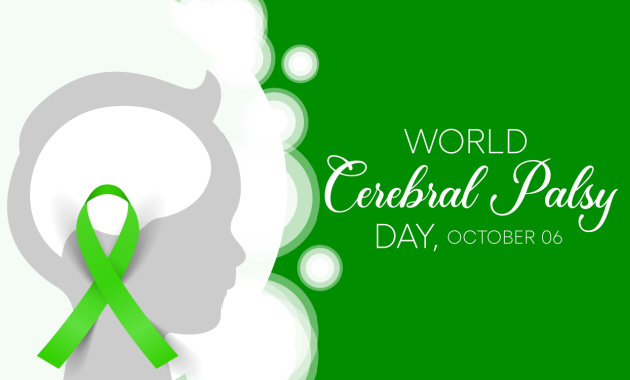
World Cerebral Palsy Day, observed on October 6th every year, is an important occasion to raise awareness about cerebral palsy (CP) and promote actions to prevent and manage this condition. Cerebral palsy is a complex condition, and its exact causes are not always clear. However, it is typically caused by abnormal brain development or brain damage that occurs before, during, or shortly after birth. Although it is not always possible to prevent cerebral palsy (CP), there are steps that can be taken by expectant mothers, healthcare professionals, and caregivers to minimize the risk and ensure positive outcomes for children. In this article, we will discuss 5 ways to protect yourself and your children from cerebral palsy.
One of the most critical steps in preventing cerebral palsy is ensuring a healthy pregnancy. Adequate prenatal care can significantly reduce the risk of CP.
-Managing Chronic Conditions: Properly managing chronic conditions like diabetes or hypertension during pregnancy can lower the risk of CP.
2. Vaccinations and Infections
Contracting infections during pregnancy can raise the likelihood of cerebral palsy, but getting vaccinated can help prevent any infections that could potentially harm the unborn baby. Additionally, maintaining good hygiene and avoiding exposure to contagious diseases can help protect the baby.
3. Avoiding Premature Birth
Premature birth is a significant risk factor for cerebral palsy. Taking steps to prevent premature birth can help protect your child from CP. These steps include:
-Prenatal Care: Early and consistent prenatal care can help identify and manage risk factors for preterm birth.
-Managing Chronic Conditions: Proper management of conditions like high blood pressure and diabetes can reduce the risk of premature birth.
-Avoiding Stress: High levels of stress during pregnancy may increase the likelihood of preterm birth, so finding ways to manage stress is crucial.
Note: Regular monitoring of the baby’s health during childbirth is important for identifying and addressing any potential problems. In certain situations, a C-section may be advised to lower the chances of birth complications.
4. Safety Measures
Preventing accidents and injuries is crucial in protecting your child from cerebral palsy. CP can sometimes result from head injuries or brain trauma during infancy. Implementing safety measures at home and in daily life is essential:
-Childproofing: Ensure a safe environment for your child by childproofing your home, including securing furniture and covering electrical outlets.
-Car Safety: Use appropriate car seats and ensure they are installed correctly to prevent injuries in case of accidents.
-Supervision: Always supervise your child, especially during activities with a risk of head injuries, such as sports.
5. Genetic Counseling
Certain individuals may have a genetic predisposition that increases their vulnerability to specific risk factors linked to cerebral palsy. These risk factors consist of infections while pregnant, being born prematurely, and having a low birth weight. If you have a family history of cerebral palsy or other developmental disorders, it is advisable to seek genetic counseling prior to conceiving a child. Genetic counseling can help evaluate the likelihood of risk and offer advice on how to reduce it.
Conclusion
Cerebral palsy is a complex condition with various contributing factors, and while not all cases can be prevented, there are steps parents and caregivers can take to reduce the risk and improve outcomes. On World Cerebral Palsy Day, it’s essential to spread awareness of the condition and the measures that can be taken to protect yourself and your children. By prioritizing prenatal care, vaccination, infection prevention, and safety, parents can play a significant role in safeguarding their child’s health and well-being.
Additionally, genetic counseling can provide valuable insights for families with a history of CP, offering guidance on family planning decisions. Together, these strategies contribute to a brighter future for children and families affected by cerebral palsy.
(The article is reviewed by Monalisa Deka, Senior Health Content Editor)
References
1. Marshalyn Y, Kim Braun, et al. Prevalence of cerebral palsy in 8-year-old children in three areas of the United Kingdom: a multicentre collaborative survey. The Lancet, 376(9755), 25-29. Published online March 2008.
https://pubmed.ncbi.nlm.nih.gov/18310204/
2. Hai-Yin Jiang, Lian-Lian Xu, et al. Maternal mid-pregnancy infection and risk of intermediate type autism in offspring. American Journal of Epidemiology, 168(8), 922-931. Published online 7 June 2016.
https://pubmed.ncbi.nlm.nih.gov/27287966/
3. Goldenberg, R. L., et al. Epidemiology and causes of preterm birth. The Lancet, 371(9606), 75-84. Published online 5 Jan 2008.
https://pubmed.ncbi.nlm.nih.gov/18177778/
4. Zonfrillo, M. R., et al. Pediatric providers’ self-reported knowledge, practices, and attitudes about concussion. Pediatrics, 135(6), 1126-1134. Published online Dec 2012.
https://pubmed.ncbi.nlm.nih.gov/23147981/
5. Ulrica Jonsson, Meta N Eek, et al. Cerebral palsy prevalence, subtypes, and severity in a high-resource, geographically defined population. Developmental Medicine & Child Neurology, 52(6), 546-551.
https://pubmed.ncbi.nlm.nih.gov/30950519/